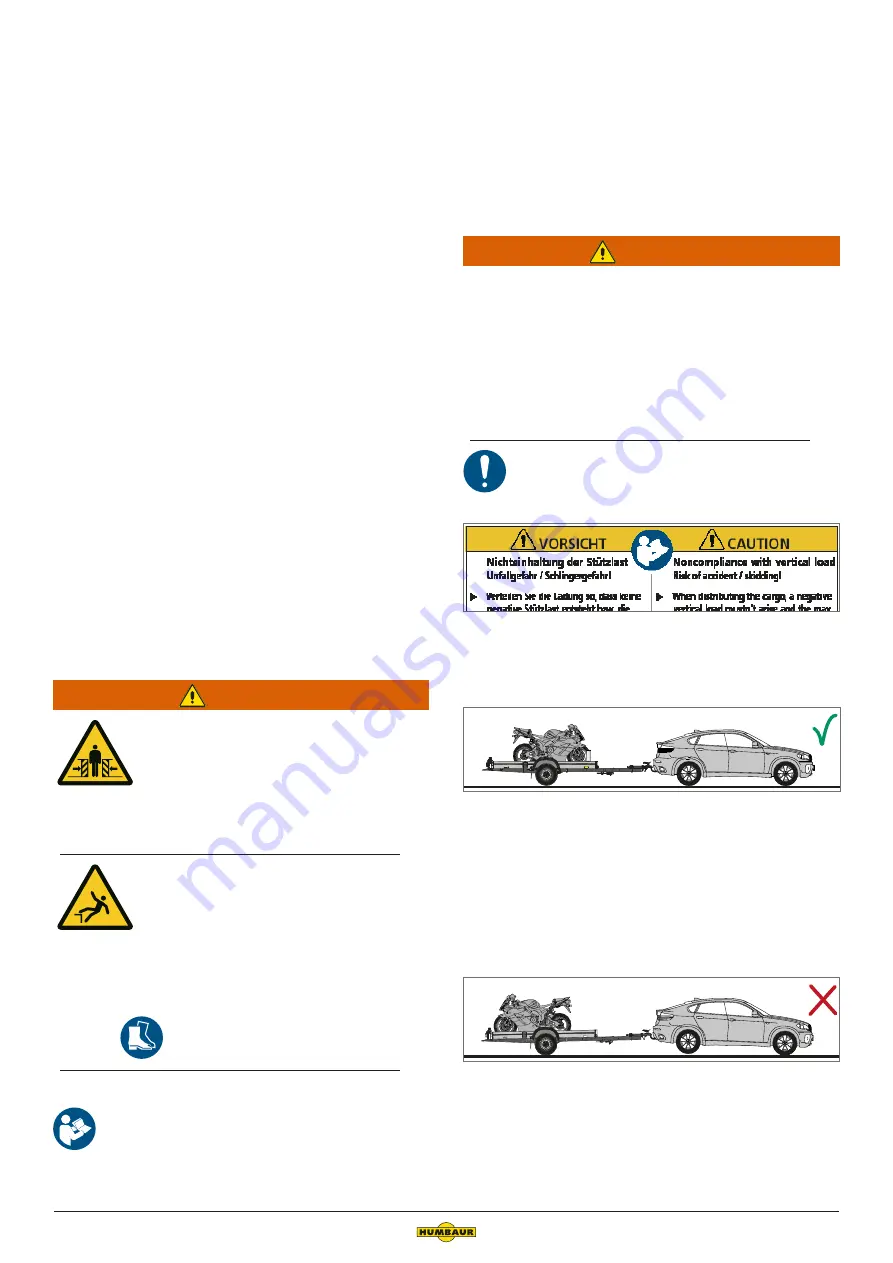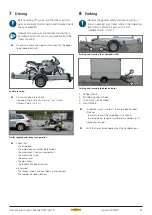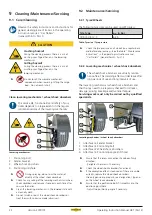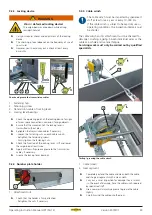
Operating Instruction Manual HKT (Part 2)
Version
2019/01
9
3
Intended Use
•
Motorcycles may only be transported by using a
motorcycle stand.
•
Transporting of small construction machinery / small
vehicles, e.g. road sweeper, lawn mower, up to the
maximum permissible gross weight.
•
Transporting of secured loads, such as pallets/cases
with goods, etc.
•
Transporting loose bulk goods such as gravel and
building rubble with trailer version with 350 mm side
walls and a ramp door.
•
The towing vehicle must have a minimum coupling
height of 410 mm.
4
Foreseeable misuse
•
Transporting loose bulk goods such as sand, wood
cuttings, leaves, grass, etc. with the wrong trailer
version (with ramp door, no closed box shape).
•
Driving with unsecured ramp door.
•
Driving with the high cover not completely closed.
•
Driving with number plate holder not locked.
•
Driving with cargo bed not locked.
•
Non-observance of the safety instructions in the
operating instruction manual, "Trailers up to 3.5 to"
(Part 1).
5
General Safety Instructions
Unsecured cargo bed!
An unsecured cargo bed may drop down while
driving - accident hazard!
►
►
Make sure that the cargo bed is secured with the safety
lock before driving off.
Moving cargo bed!
You could fall if you step onto the cargo bed
during the loading and unloading process with
simultaneous lifting/lowering of the cargo bed.
►
►
Try not to step onto the cargo bed during the lifting/
lowering process.
►
►
Take particular care when stepping onto the cargo bed.
►
►
Use
.
Observe the other general safety recommendations
in the operating instruction manual, "Trailers up to
3.5 to" (General Points - Part 1).
WARNING
6
Loading and Unloading
•
The HKT
lowerable
trailer is mainly designed for
transporting motorcycles and small vehicles.
•
You will mainly find a description of the loading/
unloading process for motorcycles below.
6.1 Load distribution
WARNING
Negative/low drawbar load - risk of skidding!
If the vehicle is loaded incorrectly, you can create a negative or
inadequate drawbar load which causes risk of skidding.
►
►
Distribute the weight evenly across the trailer.
►
►
Observe the minimum and maximum drawbar
load forces of the trailer.
►
►
Do not exceed the maximum permissible drawbar load
of the towing vehicle and trailer coupling.
Observe the information on the maximum
permissible vertical load on the drawbar.
Correct load distribution
Vehicle loaded correctly
The trailer and the towing vehicle are stable with all
wheels on the ground.
Optimal driving characteristics and minimum risk of
skidding.
Incorrect load distribution
Vehicle loaded incorrectly
The trailer is tilting backwards; the towing vehicle is tilting
forwards = the drawbar load is too low or negative.
The trailer tends to swerve, which increases the risk of
skidding.










































